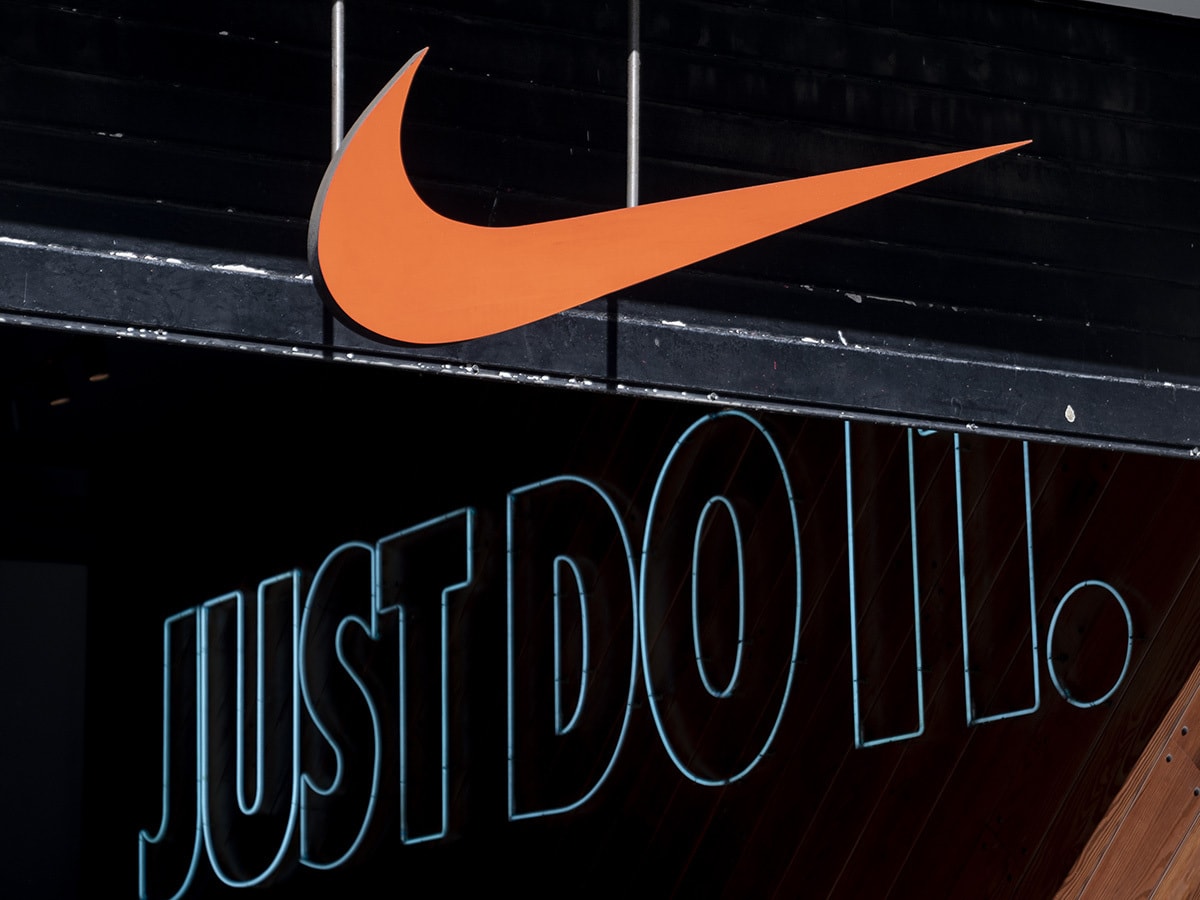Nike’s share price spiked following the announcement that it would stop selling its products in Russia. It’s welcome news given that its earnings date is fast approaching, and the stock is currently 34% down in the year-to-date. Can it maintain this good will after it fills investors in on the impact inflation is having on the company, and its struggles both producing and selling products in China?
Ahead of its earnings announcement on 27 June, Nike [NKE] shared some news that saw its share price rise close to 3% in one day. On 23 June, the company became the latest brand to announce that it was fully departing from the Russian marketplace.
People in Russia logging in to the sports apparel company’s website will now see a notice saying that it will soon be unavailable, and its 100 stores “will not reopen”, CNN Business reported. With Russia and Ukraine accounting for less than 1% of Nike’s revenues it’s likely that the company will be able to make up the shortfall, and investors seemed pleased with the news.
The positive sentiment is in stark contrast to the company’s performance so far in 2022, with the Nike share price down 32.6% in the year-to-date (through 23 June).
How has Nike’s stock been performing?
Nike last reported on its financial position in March, when it announced Q3 earnings. The company beat analyst expectations during the quarter, delivering revenues of $10.87bn, compared to the $10.59bn that analysts expected. It also beat earnings per share estimates of $0.71, by announcing $0.87.
This was a good innings considering the wider climate that Nike is operating in, where supply chain squeezes are increasing operation costs, and the rise of inflation — which is currently at record 40-year highs in the US — means people may reduce their discretionary spending.
In a nod to this uncertainty, Nike declined to provide an outlook for the coming year. CFO Matthew Friend, on a post-earnings conference call, as reported by CNBC, said that the company is “focused on what we can control. There are several new dynamics creating higher levels of volatility.”
One worrying stat revealed in the announcement was that sales in China were down 8% year-on-year in Q2. The company is continuing to feel the impact of a boycott of western brands by Chinese consumers in 2021, in protest over concerns about human rights abuses in the supply chain. China is a significant market for Nike, where sales have grown 300% over the past decade. Before the boycott, China accounted for 22% of Nike’s revenues.
China partnerships set to boost business
As for its upcoming financial results, Nike says that the picture in China should improve thanks to partnerships it has struck with retail distributors Top Sports [6110.HK] and Pou Sheng [3813.HK]. Evercore ISI analyst Omar Saad said that while sales were still on the downturn, this pace was slowing and Nike is now “turning a corner” in China.
Still, the trend among analysts as the next earnings announcement approaches seems to be to lower price targets on the stock. Deutsche Bank and Cowen & Co have both lowered their price targets on the stock to $152 (from $175) and $133 (from $139), respectively.
Bank of America remains concerned about China and the coming and going coronavirus restrictions in the country, which could slow down manufacturing. It now holds a price target of $122 per share, down from $125.
Investors will want to hear more about how Nike plans to bring customers back in China and what impact inflation is having on sales in the US — its main market which accounts for 40% of sales. They will also want to know if Nike is worth the multiples it is trading at — its forward P/E is 22.99, compared to the industry average of 11.67.
Analysts at Zacks expect the company to announce sales of $12bn for Q4, down 2.1% year-on-year. EPS is anticipated to come in at $0.81, representing a nearly 13% drop from the year before. The picture should look better for the full year though, with Zacks estimating sales and EPS to be up 4.6% and 3.4%, respectively.
According to MarketBeat, the consensus among 31 analysts is to ‘buy’ Nike. The stock has an average price target of $155.85, representing a 44.3% upside.
Disclaimer Past performance is not a reliable indicator of future results.
CMC Markets is an execution-only service provider. The material (whether or not it states any opinions) is for general information purposes only, and does not take into account your personal circumstances or objectives. Nothing in this material is (or should be considered to be) financial, investment or other advice on which reliance should be placed. No opinion given in the material constitutes a recommendation by CMC Markets or the author that any particular investment, security, transaction or investment strategy is suitable for any specific person.
The material has not been prepared in accordance with legal requirements designed to promote the independence of investment research. Although we are not specifically prevented from dealing before providing this material, we do not seek to take advantage of the material prior to its dissemination.
CMC Markets does not endorse or offer opinion on the trading strategies used by the author. Their trading strategies do not guarantee any return and CMC Markets shall not be held responsible for any loss that you may incur, either directly or indirectly, arising from any investment based on any information contained herein.
*Tax treatment depends on individual circumstances and can change or may differ in a jurisdiction other than the UK.
Continue reading for FREE
- Includes free newsletter updates, unsubscribe anytime. Privacy policy





